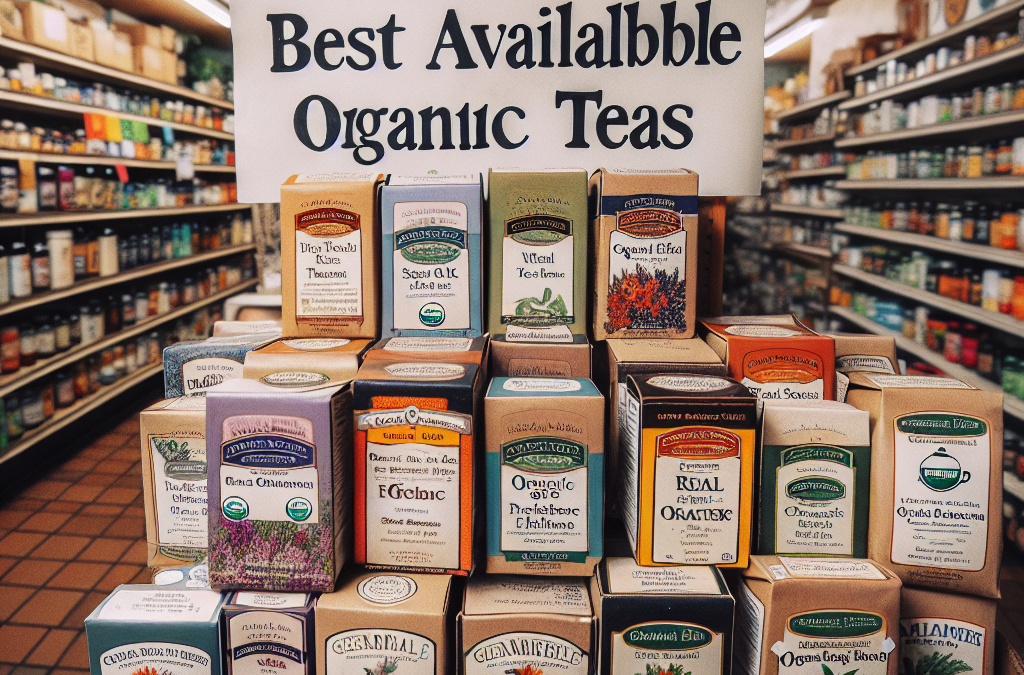1. Understand the Benefits of Live Cultured Food
Health Advantages of Consuming Live Cultured Food
Embracing live cultured food has become increasingly popular in 2025 due to its remarkable health benefits. These foods are rich sources of probiotics, which support a healthy gut microbiome. A balanced gut is crucial for digestion, immune function, and even mental health. Recent studies show that consuming live cultured food can improve gut flora diversity by up to 20% compared to standard diets.
Another significant advantage of live cultured food is its role in nutrient absorption. The fermentation process often enhances bioavailability, allowing your body to better absorb vitamins, minerals, and antioxidants. For example, fermented vegetables can contain higher levels of vitamin C and B-vitamins, which are vital for overall wellbeing.
Health experts suggest that integrating live cultured food may reduce inflammation and lower the risk of chronic diseases such as diabetes and cardiovascular issues. As we look toward 2025, understanding these benefits encourages more people to make conscious dietary choices centered around live cultured options.
How Live Cultured Food Supports Immune Health
Our immune system relies heavily on a healthy gut, and live cultured food plays an essential role in keeping this system robust. Fermented products like yogurt, kimchi, and kefir introduce beneficial bacteria that outcompete harmful pathogens. This microbial balance can lead to fewer infections and quicker recovery times.
In 2025, research continues to reinforce the connection between gut health and immunity. Regular consumption of live cultured food can help maintain a resilient immune response, especially during cold and flu seasons. Many nutritionists recommend incorporating these foods into daily routines for optimal immune support.
Probiotic-rich diets may even improve allergy symptoms and reduce inflammation-related issues. Overall, understanding the immune-boosting properties of live cultured food is key for maintaining good health in 2025.
2. Choose High-Quality Sources
Selecting the Best Live Cultured Food Products
With the rise of health-conscious consumers in 2025, selecting high-quality live cultured food has become more accessible. Look for products that list live cultures on the label, such as Lactobacillus or Bifidobacterium strains, and verify they are preserved through proper fermentation methods.
Prefer organic and minimally processed options whenever possible. Organic certification ensures that the ingredients used are free from pesticides and chemicals, which can interfere with the beneficial bacteria. Additionally, check the expiration date and storage instructions to ensure the probiotics are still viable.
Many brands now offer fermented foods in refrigerated sections, with clear information about the strains and CFU counts, making it easier to choose effective options for 2025 health goals.
Where to Find Trustworthy Live Cultured Food
Local farmers’ markets and health food stores are excellent sources for fresh, high-quality live cultured food. These venues often prioritize organic and artisanal products that retain maximum probiotic activity. Additionally, increasingly popular online platforms now offer curated selections with detailed product information and reviews.
Community-supported agriculture (CSA) programs sometimes include fermented goods, providing access to authentic and fresh live cultured options. When shopping online, look for trusted brands with good transparency and customer feedback.
As 2025 progresses, the trend toward transparency and high standards in live cultured food sources will continue, making it easier to confidently incorporate these beneficial foods into your diet.
3. Incorporate Live Cultured Food into Daily Meals
Creative Ways to Add Live Cultured Food
Making live cultured food a daily habit is simple when you get creative. Add yogurt or kefir to your breakfast smoothies for a probiotic boost, or swirl kimchi into salads and stir-fries for a tangy flavor with health benefits. Incorporating these foods into your meals ensures consistent intake of probiotics.
Another idea is to use fermented vegetables as toppings for sandwiches, wraps, or bowls. For example, a spoonful of sauerkraut or pickled vegetables can enhance flavor and support your gut health at the same time. As of 2025, culinary innovation has made it easy to integrate live cultured foods into diverse cuisines.
Consistently adding these foods not only improves your digestive health but also diversifies your diet, making healthy eating both delicious and sustainable.
Meal Planning Tips for Consistency
To maximize benefits, plan your meals around fermented options. Keep a selection of fermented foods in your fridge, so they’re readily available. Setting reminders or preparing larger batches weekly can help maintain a steady intake throughout 2025.
Try incorporating fermented snacks like probiotic-rich yogurt or kefir cups in your daily routine and include them in packed lunches. This habit can become second nature with a bit of planning, ensuring you’re consistently fueling your body with beneficial live cultured food.
Remember, the key is regularityâby making live cultured food a natural part of your meals, you’ll see better results over time.
4. Experiment with Making Your Own Cultured Foods
Beginner-Friendly Fermentation Projects
One of the most rewarding ways to truly understand live cultured food is by making it yourself. In 2025, home fermentation has become both easier and more popular, thanks to starter kits and online tutorials. Start with simple projects like homemade yogurt, sauerkraut, or kombucha.
Home fermentation allows you to customize flavors, control ingredients, and ensure freshness. Plus, itâs a budget-friendly way to access high-quality live cultured foods. As you become more experienced, you can explore fermenting other vegetables, dairy, or even craft your own kefir grains.
Embracing DIY fermentation also fosters a deeper appreciation for the health benefits of live cultured food and offers a fun, educational activity for the family.
Tips for Successful Fermentation
Ensure cleanliness by thoroughly sterilizing all utensils and containers. Use high-quality, organic ingredients whenever possible to maximize probiotic content. Keep the fermenting foods at the appropriate temperatureâmost thrive around 65â75°F (18â24°C).
Huge Discount on the Best Certified Organic Nutrient Dense Supplement!
Monitoring the fermentation process with patienceâusually 3-7 days depending on the productâresults in flavorful, probiotic-rich foods ready to enjoy. Document your process to refine your techniques and achieve consistent results.
By fermenting your own live cultured food in 2025, you gain knowledge, control over ingredients, and a sense of accomplishment that complements a healthy lifestyle.
5. Optimize Storage and Shelf Life
Proper Storage Techniques
Storing live cultured food correctly is crucial to preserving its probiotic properties. Most fermented foods need refrigeration to slow down fermentation and maintain potency. Keep your foods in airtight containers to prevent contamination and spoilage.
Many products will have a recommended shelf life, typically between 2 to 6 months, but proper storage can extend freshness. Avoid frequent temperature fluctuations, as they can negatively impact the viability of beneficial bacteria.
In 2025, advances in packaging technology have made it easier to maintain the quality of live cultured food during storage, ensuring maximum health benefits for longer periods.
Signs of Spoilage
While live cultured food is shelf-stable for a time, always inspect before consuming. Look for off smells, sliminess, or mold growthâall signs that the product has spoiled. When in doubt, discard questionable items to avoid health risks.
Learning to identify quality versus spoiled products will help you safely enjoy live cultured foods and get the most health benefits from your investments.
Proper storage and careful inspection are essential habits to develop in 2025 for safe, probiotic-rich living foods.
6. Stay Informed on Trends and Research
Keeping Up with the Latest Studies
As dietary science advances rapidly, staying current with research related to live cultured food is vital. In 2025, emerging studies continue to demonstrate how probiotics influence mental health, metabolic function, and immune response. Follow reputable sources like PubMed or academic journals for the latest findings.
Attending webinars, health conferences, or subscribing to newsletters from experts in microbiology and nutrition can help you stay informed. Implementing new evidence-based practices ensures that your incorporation of live cultured food remains effective and safe.
Additionally, exploring consumer trends helps you identify popular products and preparation techniques, allowing you to adapt your habits accordingly.
Joining Community and Expert Networks
Many communities and online forums dedicated to fermentation and gut health have grown in popularity in 2025. Participating in these groups provides support, ideas, and motivation for your health journey with live cultured food.
Following trusted experts on social media and participating in local workshops can deepen your understanding and improve your fermentation success rate. Staying engaged with current trends allows you to optimize your health strategies continuously.
Being proactive about education and community involvement makes your pursuit of live cultured food more enjoyable and rewarding.
7. Share Your Cultured Food Journey
Inspire Others with Your Experiences
Sharing your success stories and recipes can motivate friends and family to incorporate live cultured food into their diets. Social media platforms are excellent channels for showcasing your fermentation experiments and health improvements.
In 2025, community-building around health-conscious eating is stronger than ever. Hosting workshops or participating in local food festivals can spread awareness about the benefits of live cultured food and foster collective health improvement.
Documenting your journey not only helps others learn but also keeps you committed to your healthy eating goals. The more you share, the more you encourage sustainable habits in your community.
Building a Supportive Network
Connect with like-minded individuals who are passionate about gut health and fermentation. Engaging in online groups or local meetups provides ongoing motivation, tips, and recipe ideas. Supporting each other makes the process more enjoyable and sustainable.
In 2025, collective efforts toward education and inspiration around live cultured food can lead to healthier communities and a greater appreciation for natural, probiotic-rich diets.
Remember, your journey with live cultured food can inspire others to improve their health naturally, creating a ripple effect of wellness.
FAQs about Live Cultured Food
- How can I tell if my live cultured food is still good?
- Check for off smells, discoloration, sliminess, or mold. Properly stored fermented foods should have a tangy aroma and no signs of spoilage.
- What are the best live cultured foods to include in my diet in 2025?
- Popular options include yogurt, kefir, sauerkraut, kimchi, kombucha, and fermented pickles. Choose high-quality, organic options for maximum benefits.
- Can I make live cultured food at home?
- Absolutely! Home fermentation is accessible and rewarding. Starting with simple recipes like yogurt or sauerkraut is recommended for beginners in 2025.
- What are the health benefits of live cultured food?
- They support gut health, boost immunity, improve digestion, and can even enhance mental wellbeing by balancing gut-brain axis signaling.
- Why is the keyword phrase ‘live cultured food’ important in 2025?
- Because its popularity is rising due to increasing awareness of probiotics’ health benefits, making it essential for a balanced diet and overall wellbeing.
Conclusion
In 2025, understanding and incorporating live cultured food into your diet remains a powerful strategy for improving health naturally. From choosing high-quality sources to experimenting with homemade fermentation, these seven tips offer a comprehensive roadmap. Embracing the culture revolution not only enhances your digestive and immune health but also creates a vibrant community of wellness enthusiasts. Make 2025 the year you prioritize live cultured food and enjoy the multitude of benefits it brings to your life!
Huge Discount on the Best Certified Organic Nutrient Dense Supplement!
Related Content
- Best Organic Baby Food Local in Ventress, Louisiana 70783
- The Economic Benefits of Supporting Organic Agriculture
- The Ultimate Guide to the Best Organic Nutrition Program Strategies for 2025
- Essential Nutrients Found in Whole Foods
- The Ultimate 2025 Guide to Organic Detox Cleanse Nutrition for Maximum Results





